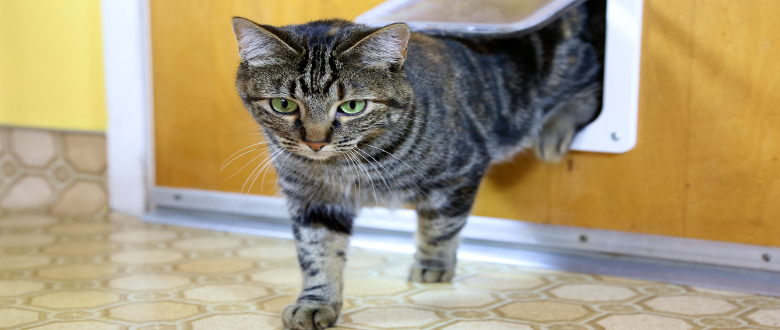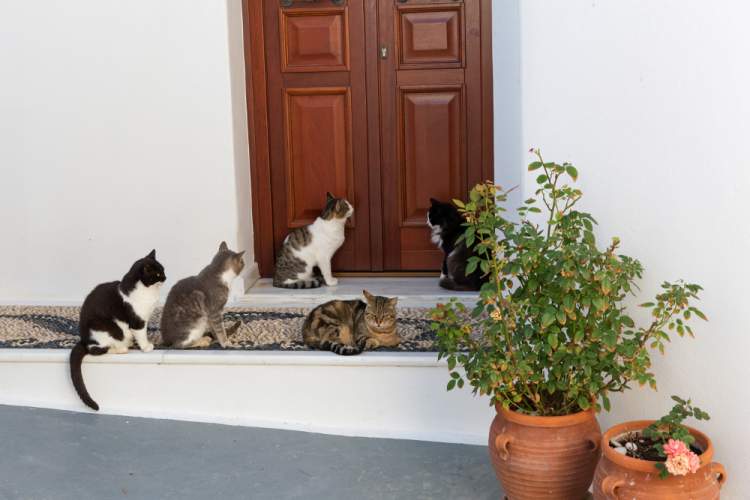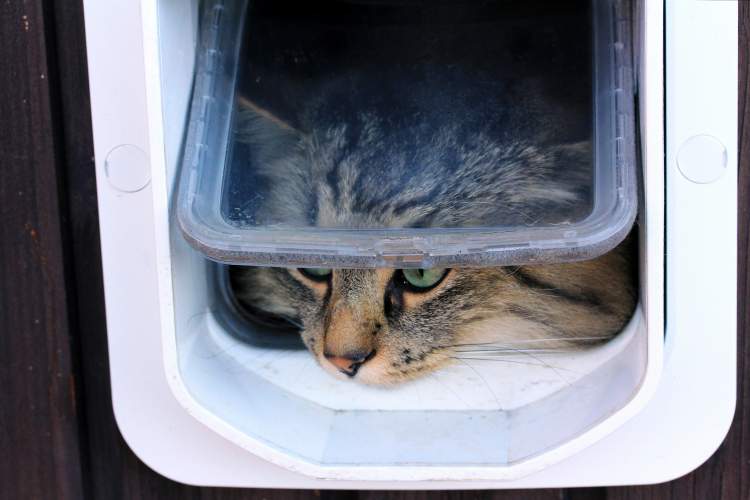
Should You Give Your Cats Milk?
At PetDialog.co.uk we are frequently asked whether or not you should give your cats milk. It has always been seen as the go-to...
12 September 2017
Read More
As pet owners, we have all been there: our cat is sat at the back door once again, scratching to come in. We’ve already been up and down twenty odd times to let them in every time they have meowed, so all that’s going through our mind is “I need a cat flap, now!”. However, there are also cons racing through our minds, the biggest of these being the prospect of a strange cat invading our home without permission.
The good news that we’ve all been talking about at PetDialog.co.uk is that some technical whizz-kids have developed a technological solution: a microchip cat flap. The best microchip cat flap allows cats to enter your home when they have a particular implanted microchip. This helps to keep unwanted animals out, but also means your cat can come and go as they please.
An initial consideration
Before you can put the best microchip cat flap into your home, one of your key considerations should be whether it can read the existing microchip your cat has; if not, you may need to have a vet implant a compatible microchip. This may seem like a big decision to make on behalf of your pet, especially when it is only to connect with the cat flap, and it is something you will need to think about before going ahead. Your vet will be able to advise you on their thoughts and what would be the best microchip cat flap for your cat.
You will find compatibility checkers for microchips and cat flaps on the website of the product you’re looking at, or if you look on Google and conduct some background research. You will also receive an instruction manual upon buying it.

How do they work?
The best microchip cat flap can be trained to recognise your furry friend based on the microchip. It’s very simple to add more than one cat identity to its memory and it unlocks quickly for your cat who is looking to come in or out.
Many microchip cat flaps can allow up to 30 cats to be registered to entering your home, but this is something you control yourself based on their microchips. They are easy to use with a four-way lock that means you can monitor your cat’s movement if you don’t want them to go out the house at a certain point, for example, during the night.
How do you install a microchip cat flap?
Microchip cat flaps can be installed in much the same way as traditional cat flaps. They are able to be added into PVC, wooden and metal doors, as well as into brick walls or plasterboard. You can additionally add them into single-glazed doors or windows, although you will need a qualified glazier to cut the glass for you.
How much will it cost?
They’re not hugely expensive to buy – you can be looking at £50-£100 on average for the best microchip cat flap on the market. It will cost more if you choose to pay someone to fit it for you, or if you want it to be fitted in a complicated place.
They are powered with four AA batteries, which can last between six and nine months, so a good option is to use rechargeable batteries, as then you’ll only need to invest in them once. They tend to produce a lower voltage, though, so you may need to recharge them more regularly.
Additionally, the battery compartment can often be at the top of the flap without a weather sealant, so if you install it on an outward opening door, you will need to keep the door closed in rainy weather.
Teaching your cat how to use a cat flap
Initially, you may have to teach your cat how the flap works – you could encourage them to use it by putting treats on the other side of the door, for example. Alternatively, you may have to tape the flap open to start with, just so they get used to the idea of walking through a hole in the door as their means of entry and exit, instead of waiting for you to open it for them. Because of this adjustment period, it can often be best to start this process during summer months when a cold draught may not be a bad thing!
Often these cat flaps can also click quite loudly, which can sometimes make the cats jump. However, once they understand it isn’t anything dangerous, they will soon get used to it. Before buying any cat flap, it is always important to check the size so that your cat will be able to enter and exit effectively. If they’re a particularly large or obese cat, you may want to consider buying a flap for a small dog.

Should you invest in a microchip cat flap?
The best thing about a cat flap is the freedom it gives your cat, and the microchip cat flap is a very good solution for letting your cat roam freely – especially if you are at work or away for a period of time in which they may want to go outside.
One thing to keep in mind with these flaps is that they won’t stop your cat from bringing in their prey as special presents for you. Security is another consideration – make sure you don’t leave the key to your door or window near the flap as someone could use it as a means of trying to enter the house. They may be able to punch through it or use your cat to trigger it open. Ensuring your security is tight is important, as much for your cat as it is for you.
For the best microchip cat flap, ensure you do your research properly. Consider their size, movements, habits and what type of space you’re looking to fit the flap in. You may need to speak with your vet first, and look into training your cat to use the flap. Ultimately though, there are more benefits than cons when it comes down to how a microchip cat flap can improve your cat’s life.
Sign up to our newsletter for more insightful content

At PetDialog.co.uk we are frequently asked whether or not you should give your cats milk. It has always been seen as the go-to...
12 September 2017
Read More
"Am I a cat or dog person?" is a question commonly asked by visitors to PetDialog.co.uk - and it's a question where the answer dep...
07 September 2017
Read More
As pet owners, we have all been there: our cat is sat at the back door once again, scratching to come in. We've already been up an...
31 July 2017
Read More